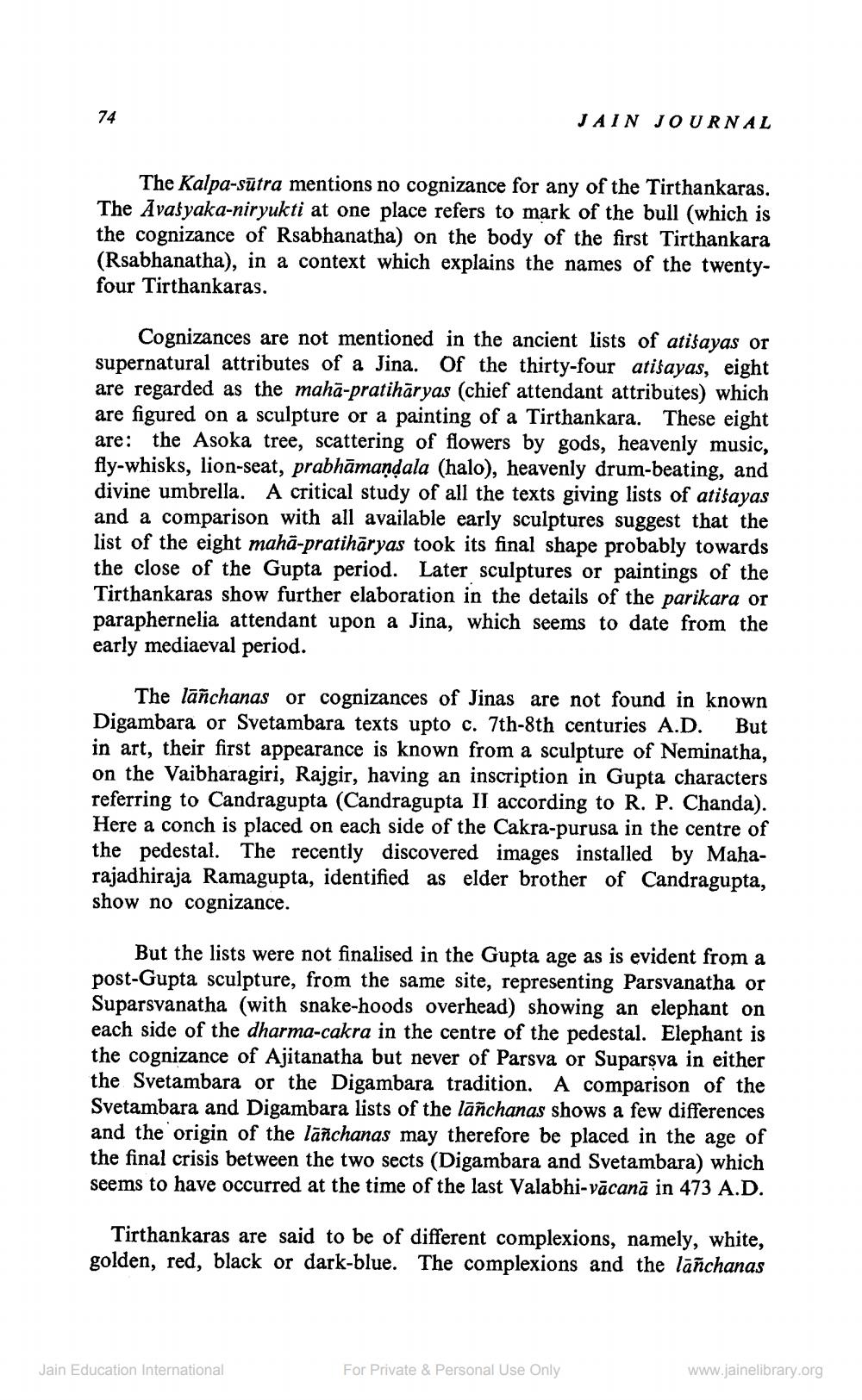________________
74
The Kalpa-sutra mentions no cognizance for any of the Tirthankaras. The Avasyaka-niryukti at one place refers to mark of the bull (which is the cognizance of Rsabhanatha) on the body of the first Tirthankara (Rsabhanatha), in a context which explains the names of the twentyfour Tirthankaras.
JAIN JOURNAL
Cognizances are not mentioned in the ancient lists of atisayas or supernatural attributes of a Jina. Of the thirty-four atisayas, eight are regarded as the maha-pratihāryas (chief attendant attributes) which are figured on a sculpture or a painting of a Tirthankara. These eight are: the Asoka tree, scattering of flowers by gods, heavenly music, fly-whisks, lion-seat, prabhāmaṇḍala (halo), heavenly drum-beating, and divine umbrella. A critical study of all the texts giving lists of atisayas and a comparison with all available early sculptures suggest that the list of the eight mahā-pratihāryas took its final shape probably towards the close of the Gupta period. Later sculptures or paintings of the Tirthankaras show further elaboration in the details of the parikara or paraphernelia attendant upon a Jina, which seems to date from the early mediaeval period.
The lanchanas or cognizances of Jinas are not found in known Digambara or Svetambara texts upto c. 7th-8th centuries A.D. But in art, their first appearance is known from a sculpture of Neminatha, on the Vaibharagiri, Rajgir, having an inscription in Gupta characters referring to Candragupta (Candragupta II according to R. P. Chanda). Here a conch is placed on each side of the Cakra-purusa in the centre of the pedestal. The recently discovered images installed by Maharajadhiraja Ramagupta, identified as elder brother of Candragupta, show no cognizance.
But the lists were not finalised in the Gupta age as is evident from a post-Gupta sculpture, from the same site, representing Parsvanatha or Suparsvanatha (with snake-hoods overhead) showing an elephant on each side of the dharma-cakra in the centre of the pedestal. Elephant is the cognizance of Ajitanatha but never of Parsva or Suparṣva in either the Svetambara or the Digambara tradition. A comparison of the Svetambara and Digambara lists of the lañchanas shows a few differences and the origin of the lañchanas may therefore be placed in the age of the final crisis between the two sects (Digambara and Svetambara) which seems to have occurred at the time of the last Valabhi-vācana in 473 A.D.
Tirthankaras are said to be of different complexions, namely, white, golden, red, black or dark-blue. The complexions and the lanchanas
Jain Education International
For Private & Personal Use Only
www.jainelibrary.org




